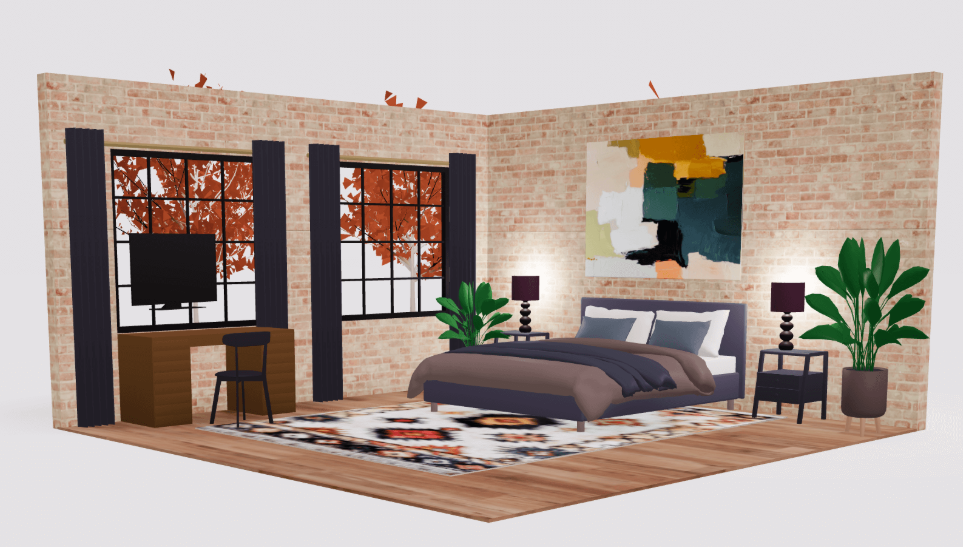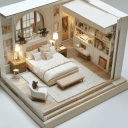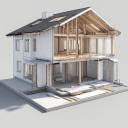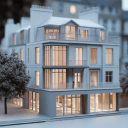Working from home has become the norm for many, making the design of our home offices more important than ever. A well-planned home office layout can significantly boost comfort and efficiency, translating into higher productivity.
In this guide, we’ll explore ergonomic design principles for home offices – from cozy corner setups to full-room studios – and see how tools like Arcadium 3D make it easy for anyone to create a productive workspace.
Acting as your virtual interior designer, Arcadium 3D empowers remote workers, interior designers, and even employers to transform any space into an efficient home office with professional layouts.
Design Your Home Office Layout
Why Ergonomic Home Office Design Matters
Ergonomics is the science of designing a workspace to fit the user’s needs, and it’s crucial for productivity. An ergonomic home office layout prioritizes your health and comfort: it keeps your body in a neutral, stress-free posture and your environment optimized for focus. Key factors include the right furniture placement, proper lighting, and a clutter-free setting.
For instance, your desk and chair heights should be set so you can sit upright with feet flat on the floor, elbows at roughly 90 degrees – desks at the correct height prevent shoulder and neck strain, and chairs with lumbar support encourage good posture. Monitors should be at eye level or slightly below to avoid neck craning, and using an ergonomic keyboard and mouse can reduce the risk of repetitive strain injuries.
Beyond physical comfort, an ergonomic design also means arranging your office for efficient workflow. This involves placing frequently used items within arm’s reach and minimizing unnecessary movements. For example, if you often reference books or files, include a shelf or cabinet near your desk.
Good layout planning reduces the time spent searching for items and keeps everything organized, which in turn minimizes distractions and keeps you “in the zone.” In short, an ergonomic home office layout not only safeguards your health but directly contributes to sustaining high productivity levels throughout the day. Research underscores this: well-lit, aesthetically pleasing work environments can boost productivity by up to 20%. A space that feels good to work in helps you stay focused and motivated.
Lighting is another critical element. Natural light is ideal – studies show that sunlit workspaces improve mood and alertness while reducing eye strain. If possible, position your desk near a window but not directly in front of intense glare. Arrange your monitor perpendicular to the window to avoid reflections on the screen.
For rooms without much sunlight or late-night work sessions, invest in quality artificial lighting. Overhead lights combined with task lighting (like a desk lamp) can create an even, bright environment. Wall-mounted lamps or under-shelf LEDs are great for small areas because they save surface space while keeping your work area well-lit.
Remember that a well-lit workspace isn’t just about seeing clearly – it can reduce fatigue and even uplift your mood, which is why it’s vital for productivity. Personal comfort and ambiance also play a role. Add a bit of life to your office – literally. Indoor plants, for example, not only decorate your space but have been linked to increased happiness and productivity in work areas.
A plant on your desk or a small potted greenery by the window can improve air quality and make the atmosphere more inviting. Likewise, choose a color scheme that energizes yet doesn’t overwhelm; soft neutrals with pops of blues or greens are popular for offices because they tend to be calming and easy on the eyes.
Keep your space at a comfortable temperature and ensure proper ventilation, as a stuffy or overly warm room can quickly sap your concentration. Ultimately, an ergonomic design balances function with comfort – when your body feels good and your mind isn’t distracted by discomfort or clutter, you can truly focus on your work.
Core Elements of a Productive Home Office Layout
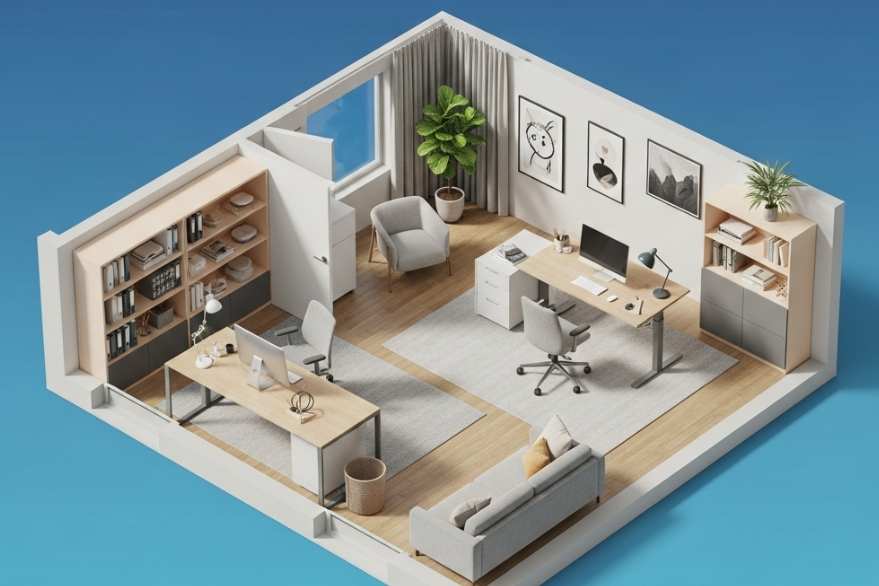
Designing a productivity-boosting home office comes down to a few core elements. Below are the key aspects to consider in any home office, big or small:
Dedicated Work Zone:
Carve out a specific area for work. It could be a spare room, a quiet corner of your living room, or even a converted closet. Having a defined workspace helps create a mental boundary between “work” and “home” time. It also lets you set up everything you need within that zone so you’re not constantly moving things around. Even if space is tight, try to avoid working from the couch or bed – a consistent, ergonomic workstation (like a desk setup) is better for posture and productivity.
Ergonomic Furniture Setup:
As mentioned, adjust your chair and desk to appropriate heights (many opt for an adjustable standing desk or a sit-stand converter to alternate postures). Use an office chair that supports your lower back and encourages an upright posture. Position your monitor about an arm’s length away, with the top of the screen at eye level.
If you use a laptop, consider a laptop stand and external keyboard/mouse to achieve this setup. Arrange your keyboard and mouse so your wrists stay straight and your elbows are by your sides. Such ergonomic arrangements reduce physical strain and fatigue, leading to better focus over long work sessions.
Smart Organization & Storage:
A cluttered desk can be a constant source of distraction. Ensure everything has a place. Use desk organizers, drawers, or shelves to keep paperwork, gadgets, and office supplies neatly stored when not in use. In small offices, think vertically: wall shelves or pegboards can hold books, headphones, or decor without taking up floor space.
In larger offices, you might have room for cabinets or a closet system. The goal is to create an environment where you can quickly find what you need. Customizing storage solutions to your needs keeps the workspace efficient and stress-free – tailored storage means less time searching and more time working productively.
Optimal Lighting:
Aim for plenty of light, especially natural daylight, but control glare. Position your desk to capitalize on windows; if you have a great view, setting your desk so you can glance up at something pleasant (a garden, the sky) can serve as a refreshing micro-break during intense work. Where natural light is limited or for evenings, combine ambient lighting with task lighting.
For example, you might use a ceiling light or floor lamp to illuminate the room generally, plus an adjustable desk lamp for focused work. Good lighting reduces eye strain and can prevent afternoon slumps by keeping you alert. Don’t forget to consider the color temperature of your bulbs – “cool” white light (around 4000K–5000K) tends to be better for concentration, whereas very warm light may be more relaxing (save that for your post-work lounge area).
Minimal Distractions:
Set up your space to minimize interruptions and mental clutter. This could mean facing your desk away from high-traffic household areas or busy backgrounds. If possible, choose a quiet part of your home for your office. Use noise-cancelling headphones or a white noise machine if sound is an issue. Keep décor simple and meaningful – a couple of art pieces or motivational quotes are fine, but too many knick-knacks might be distracting.
Remember, the idea is to create a focused environment. One advantage of planning your layout with a tool like Arcadium is that you can experiment with different configurations of furniture and partitions (like a bookshelf as a divider) to see how you might block distractions or create more privacy in your setup.
Design Your Home Office Layout
Small Home Office Layout Ideas: Productivity in Cozy Spaces
Not everyone has a whole room to dedicate to a home office – and that’s okay. You can design a highly productive small office even in a tight corner or multi-use space by using smart layout strategies. The key is to make every square inch count. Here’s how to maximize a small home office for ergonomics and efficiency:
Multi-Functional Furniture:
In a small setup, your furniture should work twice as hard. Choose pieces that serve multiple purposes. For example, a desk with built-in drawers or shelves provides workspace and storage in one, eliminating the need for a separate filing cabinet.
A wall-mounted desk that folds up when not in use can be a lifesaver in a tiny room or studio apartment. If you occasionally host clients or collaborators at home, consider foldable chairs or stackable seating that you can tuck away afterward. This way, you have extra seating when needed without permanently sacrificing floor space.
Vertical and Hidden Storage:
Go vertical to free up floor area. Install shelves or cabinets up high on walls for books, supplies, and décor. Use the space under your desk wisely – a small rolling file cabinet or even a couple of storage boxes can fit below the work surface. On the desk itself, a monitor stand with compartments or a pegboard on the wall can keep essentials off the main surface.
The idea is to declutter surfaces and keep the footprint of your office minimal. By customizing storage to fit your exact needs, you prevent piles of stuff from encroaching on your workspace, keeping it streamlined and stress-free.
Clever Layout Planning:
When space is limited, layout is everything. This is where Arcadium 3D’s design tool becomes incredibly helpful. You can input the exact dimensions of your small area into Arcadium’s free room designer online and virtually try out different furniture arrangements without any heavy lifting.
Want to see if your desk would fit better by the window or in the corner? Or how a compact L-shaped desk might compare to a small writing desk? Simply drag and drop the furniture in the 3D model to visualize it.
Arcadium lets you experiment with multiple layouts in minutes, ensuring you utilize every inch effectively. This process can highlight the most space-efficient arrangement before you commit in real life, so you don’t end up buying a desk that’s too large or a shelf that blocks access.
Lighting in Small Spaces:
Proper lighting can make a small office feel bigger and more comfortable. If your workspace is in a dim corner, add light without taking up precious surface area. Think of wall sconces, LED strip lights under shelves, or clamp-on lamps.
Arcadium’s modeling software even allows you to place virtual light fixtures in your design to see how they illuminate the area, helping you determine the optimal placement without trial and error.
For example, you might discover that a wall-mounted lamp above your desk lights your work area perfectly, meaning you can skip a desk lamp that would clutter the desktop. Good lighting will open up the space visually and keep you from straining your eyes in a small room.
Keep It Simple and Tidy:
In a petite office, minimalism is your friend. Stick to the essentials – a desk that fits, a comfortable chair, your tech gear, and just a few personal touches. Use light colors on walls and furniture to make the area feel more open (white, light gray, or pastel walls can prevent the space from feeling closed-in).
Maintain a habit of tidying up daily: file away papers, put pens in a holder, coil up charging cables. A clean, uncluttered small office not only looks bigger but also helps you concentrate better, since there’s less visual chaos vying for your attention.
Example: Even a small bedroom corner can become a functional home office. Smart use of space – like a compact desk, wall shelving, and natural lighting – creates a comfortable, ergonomic workstation without overcrowding the room. Tools like Arcadium 3D let you visualize such setups in 3D before rearranging furniture, ensuring every piece fits just right.
By combining these tactics, a small home office can deliver big productivity. The key takeaway is to plan intentionally: when you thoughtfully arrange furniture, lighting, and equipment in a tiny space (and leverage virtual planning to get it right), you create a work area that feels comfortable instead of cramped.
Large Home Office Layout Ideas: Making the Most of Spacious Rooms
Having an expansive home office is a great luxury – but it comes with its own set of challenges. In a large room, you have more flexibility to create your ideal setup, yet you also need to strategically organize the space so it remains efficient and doesn’t become an echoing empty room or a clutter magnet. Here are ways to design a spacious home office that keeps you productive:
Define Zones for Different Activities:
With ample space, consider dividing your office into zones. Your primary zone is the main workstation – desk, chair, computer, etc., where you do most of your work. Position this zone where you have good lighting and minimal distractions (for example, facing a window with a nice view or against a wall with an inspiration board, rather than in the middle of the room facing the TV in the next room).
Next, you can have a secondary zone for meetings or brainstorming – perhaps a small round table with a couple of chairs, or a comfy armchair in the corner for reading and planning. Another zone could be a reference or storage area, such as a wall of shelves or cabinets for archives, books, and equipment.
By delineating these areas (using rugs, furniture arrangement, or even portable room dividers), you give structure to the large room. This prevents the space from feeling cavernous and ensures each part of the room has a purpose.
Mindful Furniture Placement:
In a large office, it might be tempting to push all furniture against the walls and leave the middle empty. But often, pulling the desk a bit away from the wall or window can be beneficial – it allows you to face the room or the window comfortably and perhaps position your chair so you can easily swivel between the desk and a second workstation or a shelf behind you.
Ensure that important items are still within reach despite the space: for instance, if your printer or file cabinet is across the room, you’ll waste time walking back and forth for every little thing. Instead, cluster related items. If you have dual monitors and a desktop tower, keep them on the same desk to maintain an efficient workflow.
If you use a separate table for a secondary laptop or writing, situate it close enough to your main desk that you can move between them fluidly. Large spaces also allow for creative layouts – maybe angled desks or a workstation in the center of the room – so don’t be afraid to try unconventional arrangements in Arcadium’s 3D planner to see what feels both functional and visually pleasing.
Utilize the Space (But Don’t Clutter):
One advantage of a big home office is you can add supportive furniture like an extra monitor stand, a larger bookshelf, or even a small sofa or exercise equipment (like a yoga mat area) without crowding yourself.
These can enhance your work life – for example, a lounge chair by a window gives you a place to take short breaks or do casual reading away from your desk, which can spur creativity. However, avoid the trap of filling the room with unnecessary furniture or decor just because you can. Every item should serve a purpose, whether functional or aesthetic.
It’s fine to keep some open space for a clean look and flexibility. Arcadium 3D can be especially useful here: you can drop in various furniture pieces from its extensive library (desks, chairs, sofas, plants, etc.) to see how they would fit and whether the room still feels spacious and balanced with them. You might find that adding a cozy rug and a couple of armchairs creates a nice conversation corner without impeding the openness of the office.
Ergonomics at Scale:
A larger office doesn’t automatically mean a more ergonomic one – you still need to set up your main workstation thoughtfully. Ensure your desk and chair are arranged with the same ergonomic principles discussed earlier (proper heights, monitor at eye level, etc.).
In a big room, pay attention to lighting across the space: you might need multiple light sources so that the entire office is well-lit, not just the desk. Use a mix of overhead lighting and floor or table lamps in different zones so there are no overly dark corners (which can strain your eyes when you move around).
If your office has multiple windows, you might get plentiful natural light, which is great for mood and alertness, but be mindful of glare on screens and position desks accordingly. Incorporate some curtains or blinds to control sunlight at peak times. Temperature control is another factor – large spaces can run cool or warm depending on HVAC, so consider a small fan or heater if needed to keep your immediate work area comfortable.
Personalization and Inspiration:
With more wall and floor space, you can personalize your office more extensively. This could mean a gallery wall of art or diplomas, a whiteboard or corkboard for brainstorming ideas, or display space for models and prototypes if those are part of your work.
Creating an environment that inspires you can boost your creativity and drive. Just keep it organized; for instance, a large whiteboard is a fantastic productivity tool in a home office for visual planning, but mount it where it’s easily visible from your desk and keep markers and erasers in a tray nearby.
Since you have the space, you might also incorporate more greenery – perhaps a large potted plant or two, which can improve air quality and make the room more inviting (plus, as noted earlier, plants have mood-boosting, productivity-enhancing benefits).
With Arcadium’s design tool, you can even preview how these personal touches will look; it lets you apply different color schemes and add objects like plants or artwork into your 3D model to ensure the visual balance is right before you start hammering nails or buying decor.
In a nutshell, a large home office should be purposefully arranged so that it remains a productive environment. By breaking it into functional zones and using Arcadium to fine-tune the layout and contents, you can avoid wasted space and create an office that supports all your work activities comfortably.
Designing Your Home Office with Arcadium 3D
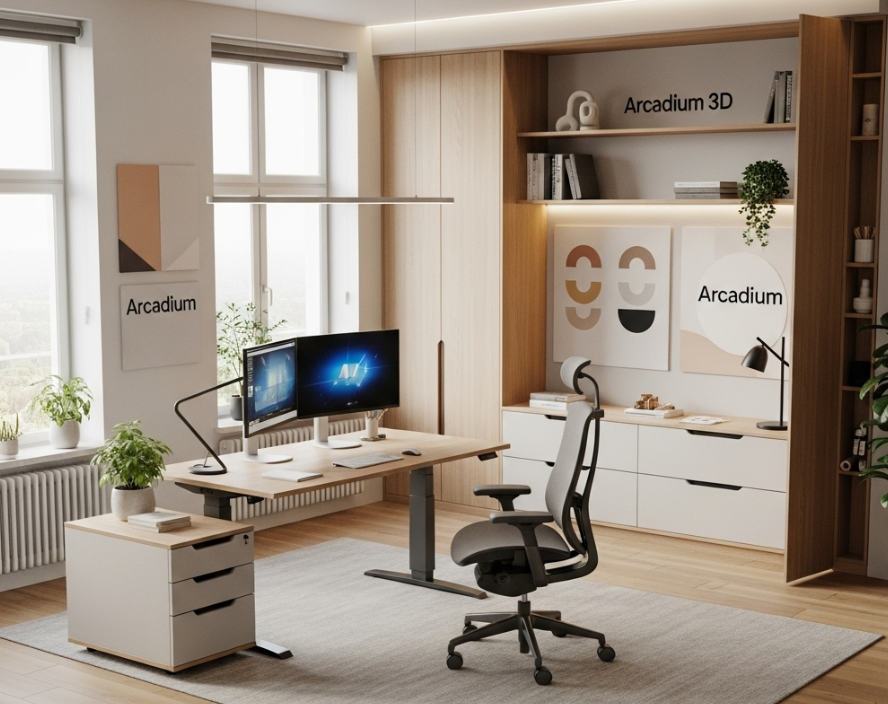
Whether you’re working with 50 square feet or 500, planning your home office layout is infinitely easier with a digital room designer. Arcadium 3D is one such tool that stands out for its ease of use and powerful features tailored to interior design.
It’s a 100% browser-based platform (no downloads or complicated software installs required) and is designed to be user-friendly even if you’re not a professional designer. Here’s how you can systematically design or transform your home office using Arcadium 3D:
Map Your Room Dimensions:
Start by opening Arcadium’s design interface and inputting your room’s dimensions. You can draw the walls of your office to the exact measurements of your actual space – whether it’s a snug alcove or a large square room. Add architectural features like doors, windows, and any built-in elements (closets, radiators, etc.) in the model, placing them where they are in real life.
This creates an accurate canvas of your room. With precise dimensions in place, you’ll know exactly how much space you have to work with and can avoid the guesswork that often leads to buying furniture of the wrong size.
Furnish and Arrange Virtually:
Now the fun part – filling the room with furniture and equipment. Arcadium provides a large library of furniture and decor items, including desks, office chairs, shelves, cabinets, and even accessories like lamps and plants. You can drag and drop these items into your virtual room.
For example, select a desk model that’s similar to what you own (or plan to buy) and position it against different walls to see where it fits best. Try out various chair placements, add a bookshelf or filing cabinet, and see how everything fits together. Because it’s all virtual, you can experiment with multiple configurations effortlessly – no lifting or rearranging heavy furniture multiple times.
If you’re curious how a standing desk might work in your space versus a regular desk, just swap the models. Arcadium also lets you adjust the size of objects or choose different styles, so you can closely match what you intend to have. This experimentation is crucial, as it might reveal solutions you hadn’t considered, like rotating the desk 90 degrees for better flow or realizing you have room to include a small meeting table after all.
Optimize Layout for Ergonomics:
As you arrange things in Arcadium, keep ergonomic principles in mind – and use the tool to check them. You can view the layout in first-person 3D mode, essentially taking a virtual walkthrough of your designed office. “Walk” around your desk: is there enough clearance behind the chair to walk or stretch? Does the monitor on the desk seem at the right height relative to where eyes would be?
You can adjust the model heights and placements to simulate an ergonomic setup (for instance, ensuring a chair model is pushed in at a realistic distance from the desk, etc.). Arcadium’s precise measurements and visual feedback help ensure that the proportions are right – so you don’t inadvertently create a layout that looks good on paper but feels cramped or uncomfortable in reality.
Think of it as a dress rehearsal for your office: by the time you physically set it up, you’ll have caught potential issues. For instance, you might discover in the 3D view that a cabinet behind the desk would block a pathway – so you can move it in the software before it becomes a trip hazard in real life.
Test Lighting and Ambiance:
One standout feature of Arcadium 3D is the ability to simulate lighting. You can add light sources in your virtual office – both natural (windows) and artificial (light fixtures) – and adjust their intensity or position. This means you can check how placing your desk in a certain spot might benefit from window light, or whether you’ll need an extra lamp in a corner.
If you’re designing a home office that doubles as a studio or for video calls, you can also experiment with background elements and lighting positions to see how it looks from different angles. Arcadium even supports different materials and colors for walls and furniture, so you can test out paint colors or desktop finishes.
Creating a realistic visualization of the room helps ensure the ambiance is right – maybe you realize a lighter wall color would reflect light better, or that a particular rug really ties the room together. In short, you get to fine-tune not just the layout but the look and feel of your home office in a risk-free virtual environment.
Share and Refine:
Once you’ve drafted a home office design (or a few variations), Arcadium makes it easy to share your plans. It generates a simple URL link you can send to others to view your design. If you’re working with an interior designer, a business partner, or just want a second opinion from a friend or family member, they can “walk through” your 3D office design on their own device and give feedback.
Collaboration isn’t only for professionals – even as a DIY home renovator, you might value input on your setup (for instance, maybe your ergonomics-savvy friend notices you could position your monitor differently). Arcadium’s sharing feature fosters this collaborative tweaking.
And if you are an interior designer or employer setting up standardized home offices for a team, being able to easily present multiple layout options to stakeholders is a huge plus – especially when everyone can visualize the result clearly in 3D rather than trying to interpret 2D sketches.
Implement with Confidence:
After refining your virtual design, you’ll have a detailed plan to guide your real-world setup. You can rearrange your room according to the final Arcadium layout, knowing the desk will fit along that wall with space for the filing cabinet, or that the chosen chair won’t bump into the bookshelf behind it.
Many users find that using Arcadium 3D significantly reduces the trial-and-error of setting up a home office, saving time and even money (because you won’t be buying furniture that doesn’t actually suit your space).
Essentially, you’ve already “lived” in the design virtually, so bringing it to life is smoother. Arcadium is free to start and intuitive (as easy as playing a video game, according to the company, which lowers the barrier for anyone – you don’t need an architecture degree to draw up a professional-looking floor plan.
By systematically using Arcadium 3D in your design process, you bridge the gap between concept and reality. It’s like having a personal 3D mockup of your office that you can edit on a whim. The result is that both novices and experienced designers can achieve a polished, ergonomic home office layout without the usual headaches.
Arcadium’s blend of simplicity and advanced capabilities (like instant 3D visualization and AI-powered rendering options) means you’re not only planning for productivity – you’re virtually experiencing it before you commit. And when you do step into your newly arranged home office for the first time, it will feel just right, because you’ve already walked those virtual floors.
Design Your Home Office Layout
Conclusion
Designing a home office that truly enhances your productivity is a thoughtful process, but it’s incredibly rewarding. By focusing on ergonomic principles – from furniture positions to lighting and organization – you create a workspace that supports your body and mind, allowing you to work comfortably for hours and achieve more with less strain.
We’ve looked at how to apply these principles in both small and large home offices: even the coziest nook can become a powerhouse of productivity with smart planning, and a sprawling office can be optimized into a functional, inspiring studio rather than an underutilized room. The common thread is intentional design.
Tools like Arcadium 3D bring this level of intentionality within everyone’s reach. What used to require professional CAD software or a lot of guesswork and physical trial-and-error is now as simple as dragging and dropping in your web browser.
Arcadium 3D serves as your creative sandbox – you can test ideas, visualize changes on the fly, and ensure that every decision, be it the placement of a desk or the addition of a lamp, contributes to a better workflow and atmosphere. As a result, you’re far more likely to end up with a home office that feels right for you.
Remember, the best home office layout is one that aligns with your personal work style and needs. Take the ideas and techniques discussed here and make them your own. Perhaps you’ll discover that a standing desk in the corner with a view of your garden keeps you energized, or that installing a dimmable lighting system helps you transition from daytime focus to evening creativity.
With a clear intent and the help of Arcadium’s modern design tool, you can confidently transform any space – small or large – into an ergonomic, productive home office. Now, let’s address some common questions to wrap up.
Frequently Asked Questions
How do I design a home office layout for maximum productivity?
Start by focusing on ergonomics and organization. Choose a quiet, dedicated space and set up a comfortable desk and chair at proper heights. Ensure good lighting (ideally natural light) and keep your essential tools within arm’s reach.
Plan the layout so there’s no clutter and you can move around easily. You can use a tool like Arcadium 3D to experiment with different layouts and find the most efficient arrangement before you set it up for real.
What are the most important ergonomic essentials for a home office?
The key ergonomic essentials include an adjustable chair with lumbar support, a desk at the right height (or a standing desk if you prefer alternating sitting/standing), and a monitor positioned at eye level. An external keyboard and mouse can help keep your wrists straight (especially if you use a laptop).
Also important are good lighting (to reduce eye strain) and sometimes a laptop stand or monitor arm to achieve the correct screen height. Don’t forget to set up your workspace so you have some room to stretch and adjust your posture periodically.
How can I make a small home office space more efficient?
In a small space, use multi-functional furniture and vertical storage to save space. For example, use a desk with drawers or add wall shelves above the desk. Keep only the equipment you need daily on the desktop and store the rest. Arrange your furniture in a way that opens up floor area – often pushing the desk against a wall or into a corner works well.
Use light colors and adequate lighting to make the room feel bigger. Planning with Arcadium 3D can be very useful here; you can try different furniture sizes and layouts virtually to see what configuration makes the room feel roomier and more functional.
What should I consider when setting up a large home office?
In a large home office, it helps to divide the space into functional zones (work area, meeting or reading area, storage zone, etc.) so the room is well-utilized. Ensure your main workstation is arranged ergonomically with all necessary items nearby, even if the room is huge – you don’t want to walk across the room constantly for files or equipment. Use rugs or furniture groupings to create defined areas.
Also, double-check lighting; a big room may need multiple light sources to cover each zone. Personalize the space to keep it inspiring (art, plants, whiteboard, etc.), but avoid cluttering it with unnecessary furniture. Arcadium 3D can help you play with furniture placement in a large room to strike the right balance between full and empty space.
Do I need to be a professional designer to use Arcadium 3D?
Not at all. Arcadium 3D is designed for both professionals and beginners. Its interface is very user-friendly – you can master the basics in minutes . It offers advanced features (like realistic 3D views and lighting adjustments) without the steep learning curve of traditional design software.
Many non-designers (like homeowners and remote workers) use Arcadium 3D to successfully plan rooms. Plus, there are templates and tutorials to help you get started if you’re unsure how to begin.
Is Arcadium 3D really a free room designer tool?
Yes. Arcadium 3D offers a free-to-use platform for designing rooms, including home offices, right in your browser. You can start designing without any cost – no credit card or software download needed. The free version has a robust set of features (walls, furniture library, 3D walkthroughs, etc.) that are often enough for typical home projects.
They do have premium options, but you can definitely create a complete home office design with the free tool. It’s essentially a free room designer online that anyone can try out to bring their ideas to life.
How does Arcadium 3D help visualize a home office design?
Arcadium 3D creates an interactive model of your room. As you add furniture and make changes, you can switch to a 3D view to see exactly how those changes look in a realistic sense. You can “walk” through the virtual room as if you’re actually there, getting a sense of space and flow. It also allows you to apply different colors, materials, and lighting to simulate the ambiance.
This level of visualization means you can catch potential issues (like a chair being too close to a shelf, or a lamp not lighting a corner well) and try out solutions virtually. Essentially, it’s like test-driving your home office before committing – ensuring the design not only looks good on a blueprint, but also feels right when you’re in it.
Can I redesign my existing home office with Arcadium 3D?
Absolutely. You can use Arcadium 3D to map out your current office setup and then tweak it to explore improvements. For example, input the room and furniture you have now, then use the tool to try moving the desk or adding a new storage unit to see if it improves the space. It’s great for visualizing a “makeover” – you might be considering buying a bigger desk or repainting the room; with Arcadium, you can preview how those changes will look and function.
Many people use it not just for new rooms but to revamp and optimize what they already have. Since it’s easy to use, you can continuously update your design as you get new ideas or as your needs evolve (like if you later decide to add a second monitor or a standing mat, etc.). This makes it a handy companion for ongoing home office improvements.
Design Your Home Office Layout

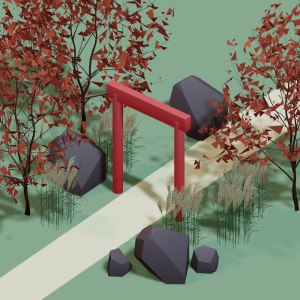 All training, tips and articles
All training, tips and articles
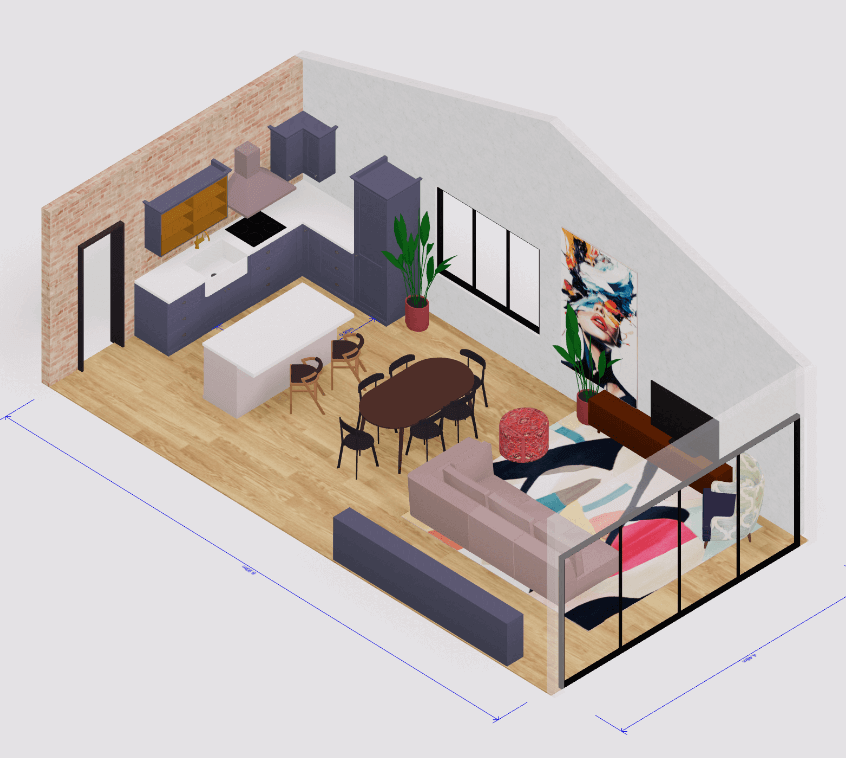 3D house design tool
3D house design tool
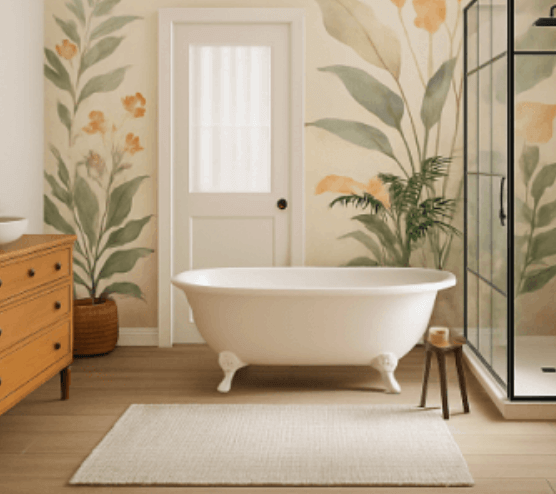
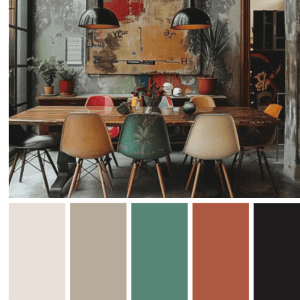 Color palette generator
Color palette generator
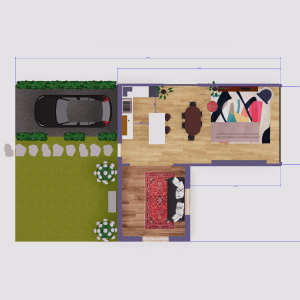 Floor plan creator
Floor plan creator
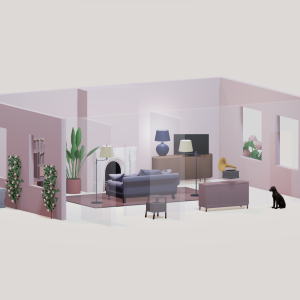 Interior design app
Interior design app
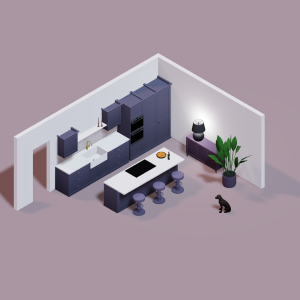 Kitchen design tool
Kitchen design tool
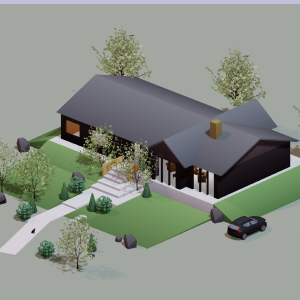 House design software
House design software
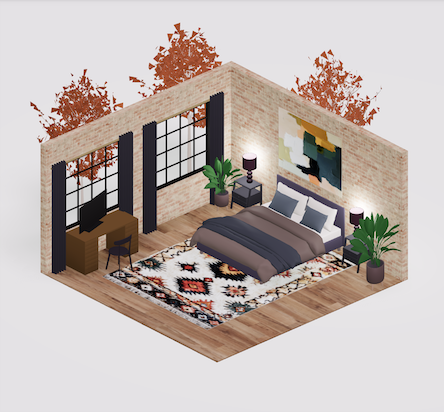 Room designer
Room designer
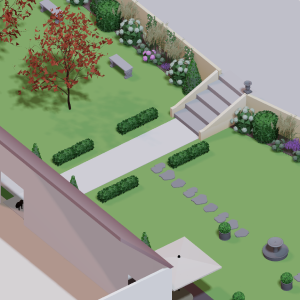 Landscape design software
Landscape design software
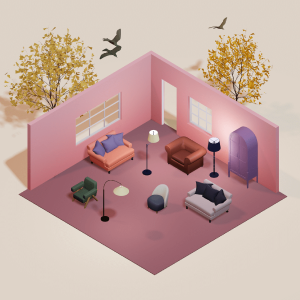 Bedroom design
Bedroom design
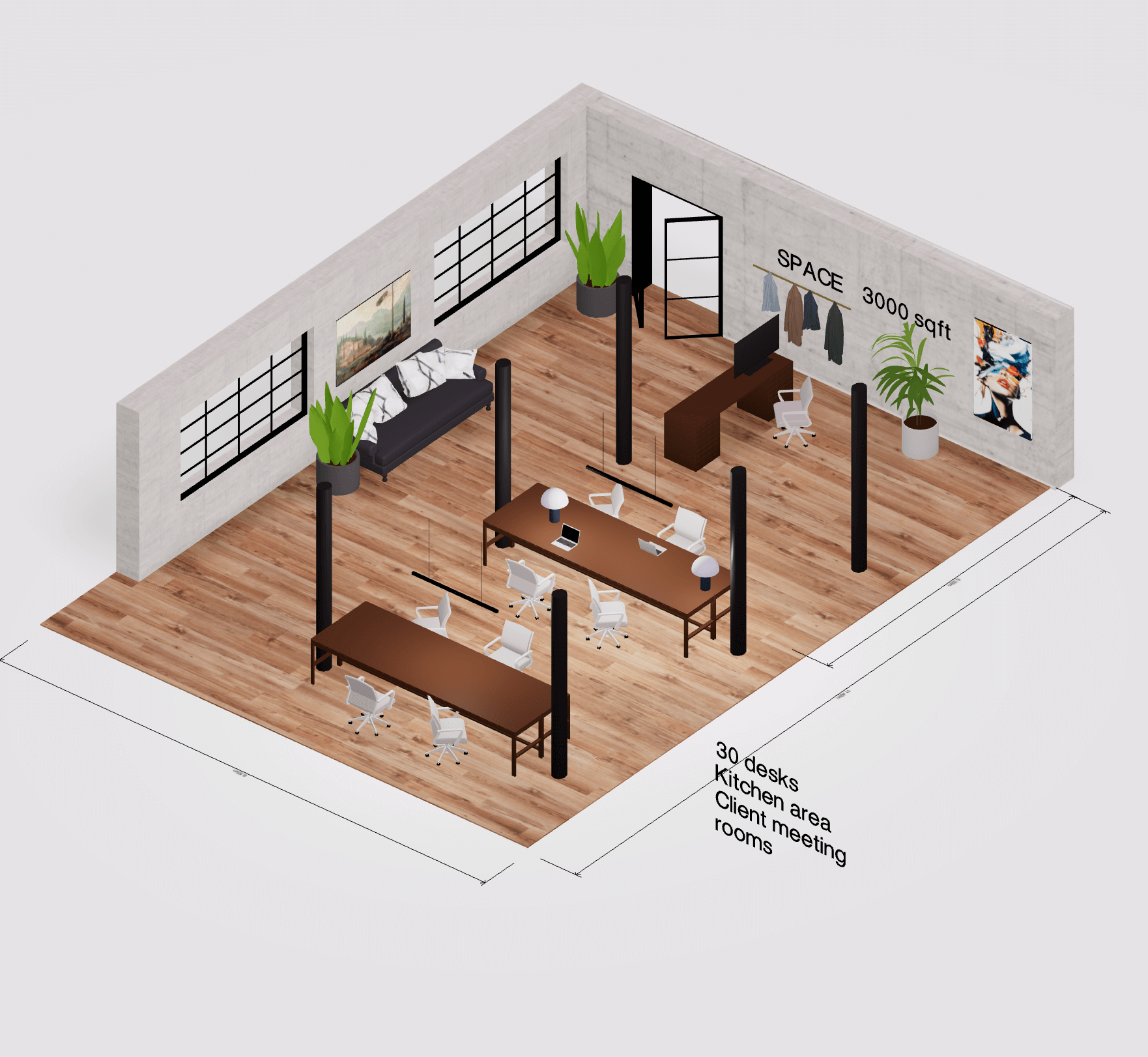 Office floor plan creator
Office floor plan creator
